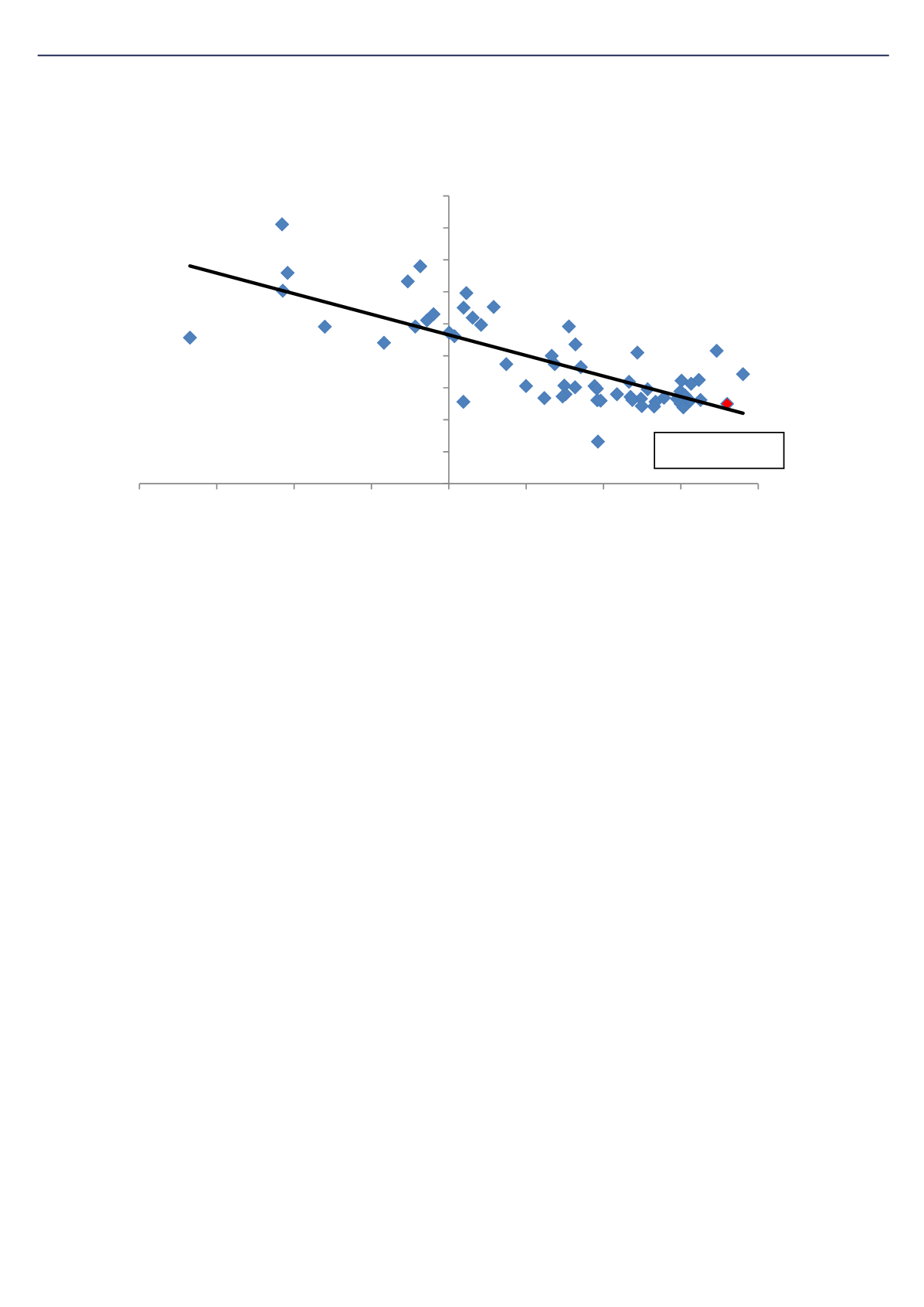

Irish Pensions Magazine Autumn 2016
8
Advertorial
Expert Opinion
Figure 3: Funds beta relative to historical returns
Source:Morningstar data for HardCurrency for three years to30 June 2016.
Past performance is not a guarantee of future results.
Broad index exposure appears to provide some
defence for investors from some of the inherent
behavioural biases of active managers and provides
higher return potential, even though it means being
exposed to both stronger and weaker parts of the
market.
Portfolio Construction: Understanding the
Underlying Exposure
It is not ground-breaking to state that diversification
is considered a positive for investment portfolios. But
it is worth looking at how active managers approach
portfolio construction. In local currency, active funds
have generally invested in more countries than are in
the JPM GBI-EM Global Diversified Index. At the same
time though, active funds tend to hold significantly
fewer securities than the benchmark; at the end of
2015, this index contained 188 bonds across 15
countries, while the average number of holdings in
an active fund stood at 89 across 22 countries.
Managing concentrated portfolios in such an
idiosyncratic market runs the risk of significantly
higher tracking error, while also requiring trading in
larger tickets. This may lead to higher trading costs
and contribute to the underperformance of active
strategies.
Index Strategies Provide Cost-Effective
Solutions
Sowhile it is clear that active strategies face headwinds
in EMD investing, there were also perceived
challenges to adopting index strategies in the EMD
space. However, experienced index managers have
taken practical steps to minimise the negative
effects of historically high replication costs, volatility
and considerable inefficiency in the EMD space. At
State Street Global Advisors, we have been running
indexed EMD strategies for over 10 years and this
investment expertise is evident in our consistent and
efficient delivery of benchmark returns in indexed
EMD strategies and funds.
While the trading cost for EM hard currency bonds
is similar to investment grade corporate bonds, the
cost of trading local currency denominated securities
is half that. The cost of replication is thus no longer
as prohibitive as many might think. When you marry
this with an experienced, dedicated and co-located
EM trading desk, portfolio managers (PMs) are able
to keep trading costs down.
EMD indices typically experience higher levels of
turnover than other fixed income benchmarks with
consequent rebalancing costs. Experienced PMs can
minimise turnover by pro-actively anticipating index
changes, gaining exposure through primary market
placements and working with their traders to access
liquidity pools.
While certain taxes are difficult to avoid when
holding local EM bonds, a sophisticated investment
management process that understands the risk/
reward trade-offs between fully replicating the
benchmark and alternative positions or proxies can
minimise the tax drag without compromising on
acceptable levels of risk.
Finally, indexed EMD strategies are not passive when
it comes to portfolio construction and security
0.50
0.70
0.90
1.10
1.30
1.50
1.70
1.90
2.10
2.30
-8.00 -6.00 -4.00 -2.00 0.00
2.00
4.00
6.00
8.00
Beta
Total Return, %
JPM EMBIG DIV









